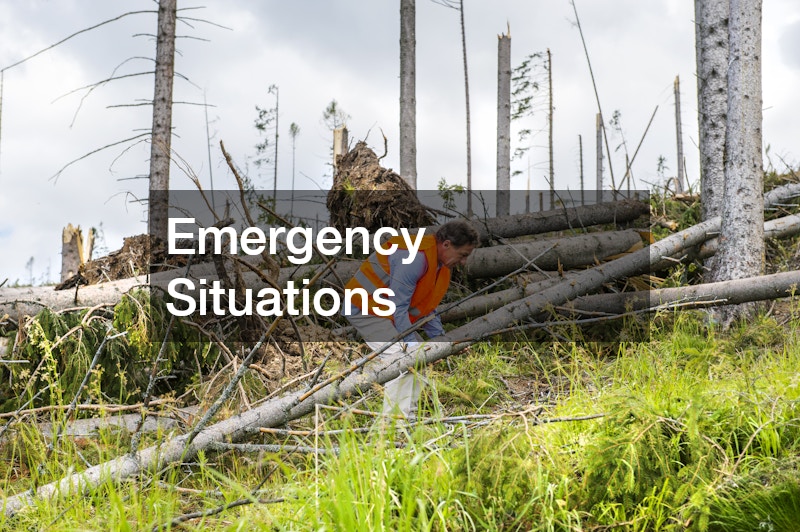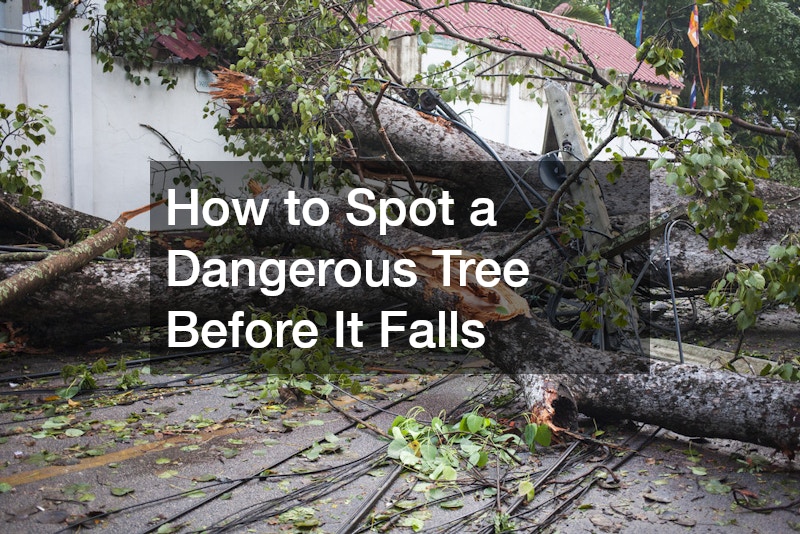It’s easy to overlook the trees that surround us as permanent fixtures, yet their potential to cause harm is significant. Recognizing the warning signs of a dangerous tree can prevent potential damage to property and, more critically, injury to people. Whether in a backyard or a public space, early detection of hazardous trees is crucial for maintaining a safe environment.
The Warning Signs of a Dangerous Tree
Visible Damages to the Tree
One of the most obvious indicators of a potentially dangerous tree is visible damage, such as broken branches and cracks. Broken branches, especially those hanging precariously, threaten to fall unexpectedly, posing risks to people and property below.
Additionally, cracks in the trunk or major limbs can signify structural weaknesses that undermine the tree’s stability.
Leaning trunks are another critical visual cue to assess. While some trees naturally lean due to sunlight competition or growing conditions, a sudden or significant lean often indicates root or soil issues. Understanding the difference between natural growth patterns and worrisome inclines is essential in identifying hazardous trees.
Monitoring for any fresh wounds on a tree’s trunk or limbs is important because they can lead to serious issues. Wounds might stem from storm damage, construction, or other physical impacts, leaving the tree susceptible to disease or decay. Such injuries can compromise the tree’s ability to support its weight, turning it into a potential hazard.
Fungal and Insect Infestations
The presence of fungi on a tree is a warning sign that should not be overlooked, as it often indicates internal decay. Fungi such as mushrooms growing at the base or on the trunk can be signs that the tree’s inner structure is compromised. This decay weakens the tree and increases the risk of it falling, especially during adverse weather conditions.
Insects, while a natural part of the ecosystem, can be detrimental to a tree’s health when present in large numbers. Infestations by pests like borers, which tunnel through wood, or aphids that sap essential nutrients, can severely impact a tree’s health over time. When these infestations go unchecked, they can hasten a tree’s decline, making it more susceptible to falling.
Regular inspections for signs of infestation or fungal growth can provide early warnings of a tree’s compromised stability. Dead wood and sudden leaf loss can also accompany these issues, painting a fuller picture of the tree’s health. Addressing these signs promptly with appropriate measures can stave off further damage and prevent potential hazards.
Assessing a Tree’s Stability
Root System Examination
The roots of a tree are its foundation, and inspecting them is key to assessing its overall stability. Visible root issues, such as damaged or decaying roots, can indicate that a tree’s anchoring system is compromised. In some cases, root damage may be due to construction, soil compaction, or pest activity, each impacting the tree’s ability to stand firm.
Look out for surface root disturbances such as uplifting soil, which may indicate root stress or failure. When roots are unable to anchor a tree adequately, the risk of toppling increases dramatically, especially in high winds. Observing these signs early allows for preventive actions that can stabilize the tree and avert disaster.
Roots are also integral in nutrient and water absorption, making their health paramount for tree vitality. Poor root health can lead to inadequate growth and reduced resistance to environmental stresses. Ensuring roots are free from damage and that they have sufficient space to grow is crucial for promoting robust tree stability.
Canopy and Leaf Health
The condition of a tree’s canopy and leaves can offer significant clues about its underlying health. Sparse foliage or significant dead branches are often signs of a tree struggling internally. Consistent leaf discoloration or premature leaf drop can be indicators of root problems or disease, both affecting stability.
A robust and full canopy usually signifies that a tree is healthy, with sufficient energy reserves to maintain its natural processes. Conversely, a thinning canopy might point to issues like nutrient deficiencies or internal decay. Regular monitoring of these signs can help identify early-stage problems before they compromise the tree’s stability further.
Calling a Professional Arborist
Risk Assessment Complexity
Some tree health issues can be subtle and require a trained eye, making the expertise of a professional local tree service invaluable for comprehensive risk assessments. Arborists possess the knowledge to gauge complex factors like root structure, decay extent, and disease progression. Engaging an arborist ensures accurate diagnoses, enabling informed decisions about tree removal or preservation.
Understanding when a problem is beyond common assessment is essential. When visible observations suggest significant internal issues, an arborist’s advanced tools and techniques, like digital imaging, can confirm suspicions. Their assessments provide not only immediate safety recommendations but long-term management strategies for tree health.
Emergency Situations
Urgent scenarios necessitate the quick involvement of a professional arborist to mitigate immediate dangers. When a tree poses an imminent threat, such as significant lean after a storm or sudden root exposure, swift action can prevent accidents. Arborists are equipped to handle emergencies safely, using techniques that minimize risk to people and property.
In crises such as when a tree is precariously close to power lines or structures, professional intervention is vital. Arborists can coordinate with utility companies to ensure safe removal without disrupting essential services. This level of coordination underscores the importance of professional involvement in managing high-risk situations effectively.
Identifying and addressing dangerous tree conditions is vital for safety and property protection. By understanding the warning signs and assessing stability, one can prevent potential hazards from turning into serious problems. Regular monitoring and timely professional intervention empower homeowners and property managers to maintain safe, healthy landscapes.


